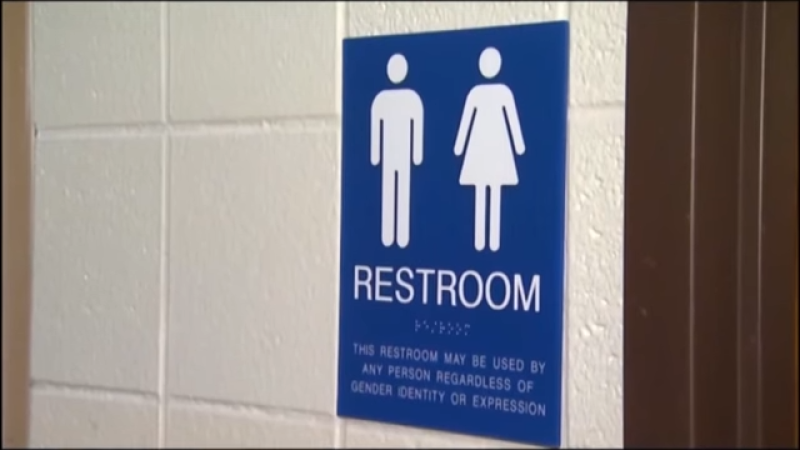Milley crafted Biden Admin's fiction that Afghanistan fell in just 'eleven days'
Once the Taliban had taken over Afghanistan, the Biden Administration settled on a false narrative that the collapse of Afghanistan had occurred in just eleven days, and thus could not have been predicted. Milley led the charge in promoting it, despite experts and military personnel on the ground in Afghanistan saying otherwise.
Among the litany of mistakes and falsehoods pushed by U.S. military commanders and President Biden in 2021 was the fiction that Afghanistan fell in only “eleven days” in mid-August 2021. In reality, the Taliban takeover unfolded over multiple months following then-President Joe Biden’s disastrous withdrawal "Go-to-Zero" order on April 14, 2021. The architect responsible for that house of cards was then-Chairman of the Joint Chiefs Mark Milley.
Many in the Biden Administration — President Biden himself, then-Defense Secretary Lloyd Austin, then-Secretary of State Antony Blinken, and others — joined Milley in pushing the “eleven days” claim, although General Austin “Scottie” Miller, the final commander of NATO’s Resolute Support mission in Afghanistan, was among those who later admitted that Afghanistan had not collapsed in just eleven days, but rather over months.
Just the News previously laid out how Milley also wrongly dismissed the comparison between the fall of Saigon and the impending fall of Kabul, massively inflated the size of the Afghan military and police by falsely claiming that they numbered 325,000 to 350,000 strong, and demonstrated he was not tracking the reality on the ground when he underestimated the speed and scope of Taliban district control in the summer of 2021.
Milley then ran cover for the Biden Administration once the situation went sideways by misleading about how quickly the collapse of Afghanistan had occurred. Biden pardoned him on his last full day in office in January 2025.
Milley did not respond to requests for comment sent to him through Princeton University, where he was named a visiting professor last year, and through JPMorgan Chase, where he has been a senior adviser since 2024, nor to Just the News' previous reporting.
House GOP report misleads about Milley running cover for Biden Admin intel failure
HFAC’s final report last year omitted many key facts about Milley’s miscalculations and false statements on Afghanistan — and also left out Milley’s misleading claims about Afghanistan falling in just a week and a half.
HFAC’s report from last year had a lengthy section where it attempted to claim that U.S. generals had predicted how quickly the Taliban would take over, when in reality Milley and other military commanders very much did not predict this.
"Chairman McCaul stands by his comprehensive report, the culmination of 18 transcribed interviews, seven public hearings, and 20,000 pages of documents obtained under subpoena from the State Department,” Emily Cassil, a spokesperson for McCaul, told Just the News.
The final HFAC report attempted to pit statements from Biden and former White House press secretary Jen Psaki against statements from Milley and others, but the claims from Biden and Psaki about being surprised by the Taliban takeover are not actually contradicted by those by Milley, who led the way in claiming that no one predicted Afghanistan would fall in just a week and a half.
The HFAC report pushed this stance in a lengthy section: “Ms. Psaki, for example, claimed no one anticipated the fall of the Afghan government and forces with statements like, ‘I don’t think anyone assessed that they would collapse as quickly as they did. Anyone. Anyone in this room. Anyone in the region. Anyone anywhere in the world.’ … In her testimony before the committee, when presented with military guidance to the contrary and asked what information supported her claim, Ms. Psaki quibbled that ‘quickly’ has a broad range of potential definitions, ignoring the unmistakable impression that statement created for Americans watching."
The report continues to say "On August 20, 2021, President Biden contended that ‘no one — I shouldn’t say ‘no one’ — the consensus was that it was highly unlikely that in eleven days they’d collapse and fall, and the leader of Afghanistan would flee the country.’ Valid explanations are few and far between for the chasm between military testimony on advice to the president on an imminent Taliban takeover and the administration’s claimed surprise when that came to pass.”
Mixed messaging after the fact between White House and Pentagon
There was no “chasm” between what Milley said and what Biden said, and indeed, it appears that Milley first made the “eleven days” claim, with Biden and other Biden Administration officials then following suit.
In reality, neither Milley, Miller, then-CENTCOM Commander Frank McKenzie, nor any other military commanders have ever said they had predicted the Taliban would take over Afghanistan in mid-August 2021, despite the final report implying they had. And the “eleven days” claim which the final report attributed to Biden on August 20, 2021 had first been uttered by Milley two days prior.
Milley himself, like Psaki and Biden, had claimed in mid-August 2021 (and then repeatedly after that) that “there was nothing that I or anyone else saw that indicated a collapse of this army and this government in eleven days” and that “I did not, nor did anyone else see a collapse of an army that size in eleven days.” And Milley had made the claim first.
Despite this, the HFAC report attempted to make it seem like it was just Biden who had made this “eleven days” assertion, when in fact it was also made by — and most likely originated with — Milley and other military leaders.
Collapse of Afghanistan occurred over months — not days
Afghanistan had not collapsed in just eleven days, despite it now often being treated as conventional wisdom, likely thanks to the narrative pushed by Milley.
U.S. Forces-Afghanistan produced a timeline which displayed the warning signs about the Taliban takeover starting in early July 2021.
The Taliban was projected to “seize 18 strategic districts” and “isolate provincial capitals” on July 9, 2021. There were “five provincial capitals on verge of collapse” on July 21. The Afghan government’s “collapse” was “foreshadowed” on July 28, 2021 with “4 of 5 indicators in critical status.”
Lashkar Gah and Kandahar provinces were “under duress” by July 30, 2021, according to the timeline, and there was an “imminent cascade of provincial capital collapse” by August 1, 2021. By August 9, the Taliban was “poised to attack Kabul with little to no warning.” And by August 13, the “fall of Kabul” was “imminent” with “6 of 7 key indicators met.” Despite weeks of warning signs, the non-combatant evacuation operation (NEO) wasn’t declared until August 15.
The Long War Journal, part of the Foundation for the Defense of Democracies, produced a real-time mapping of Taliban control in Afghanistan which made it clear that the collapse of Afghanistan did not occur in just eleven days in August 2021, but rather over the months following Biden’s Go-to-Zero order.
According to this mapping project, the day before Biden’s withdrawal directive — April 13, 2021 — the Taliban controlled 77 Afghan districts while the Afghan government controlled 129 districts, with 194 districts contested. By May 18, 2021, Taliban district control had risen to 86 districts and Afghan government control had dropped to 98 districts. By June 16, 2021 — two months before the Taliban seized Kabul — Taliban district control eclipsed that of Afghan government control, with the Taliban controlling 104 districts and the Afghan government controlling only 94.
The mapping project said that on July 10, 2021 — more than a month before the Taliban seized Kabul — the Taliban controlled 216 districts while the Afghan government controlled only 73, meaning that the Taliban had nearly tripled its district control in the three months since Biden’s Go-to-Zero order, while the Afghan government had seen its district control cut nearly in half. And by July 25, 2021, the Taliban controlled 223 districts while the Afghan government was still clinging to only 73, meaning that before August even began the Taliban was in control of more than three times as many districts as the Afghan government was.
The “eleven days” fiction: "No one saw it coming"
Yet Milley said on August 18, 2021, that “there was nothing that I or anyone else saw that indicated a collapse of this army and this government in eleven days.”
Milley added during the press conference with Austin that “I stood behind this podium, and I said that the Afghan security forces had the capacity, and by that, I mean, they had the training, the size, the capability to defend their country. This comes down to an issue of will and leadership. And no, I did not, nor did anyone else see a collapse of an army that size in eleven days.”
Before the Taliban takeover, the Biden Administration had repeatedly inflated the size of the Afghan security forces to being “300,000” strong when there was overwhelming evidence that it was much smaller than that, and that Milley himself had further inflated the Afghan forces to an even more implausible size of “325,000 to 350,000” strong.
Biden then claimed two days later that “no one — I shouldn’t say ‘no one’ — the consensus was that it was highly unlikely that in eleven days they’d collapse and fall, and the leader of Afghanistan would flee the country.”
Blinken echoed the “eleven days” claim when testifying before HFAC in September 2021.
McKenzie also testified in September 2021 that “I did not see it coming as fast as it did. I thought it would be a matter of into the fall or into the winter. I did not see it happening in eleven days in August.”
Biden Pentagon spokesman John Kirby even tried to later claim in 2023 that the “Taliban takeover” had occurred in just “nine days.”
Milley told the Senate in late September 2021 that the U.S. military would need to take a look at two main factors which he said were allegedly behind the Taliban takeover, the second of which was the “rapid collapse, unprecedented rapid collapse, of the Afghan military in only eleven days in August.” Milley said that an area that needed to be “fully explored” was “the intel” as he asked, “How did we miss collapse of an army and a government that big, that fast, in only eleven days?”
Austin told the Senate at the same hearing that “we certainly did not plan against the collapse of a government in eleven days” when pressed on whether the Pentagon had ever planned for the immediate collapse of the Afghan government.
Milley later reportedly told Chris Whipple, the author of The Fight of His Life, that “the intelligence I saw predicted months” and said that “we leave the country in August — and in a reasonable, worst-case scenario it’s a Thanksgiving, Christmas, January time frame when things fall apart. I think the intelligence was very, very good. The one exception is that no one predicted eleven days.”
Admiral Frank Whitworth, then the director of intelligence for the Joint Staff and Milley’s right-hand man at the time, also reportedly pushed the story that the Afghan military and government collapsed in two weeks or less. Bob Woodward’s book, War, quoted Whitworth as saying: “I don’t think anyone in uniform, in the intelligence community could say we knew it was going to fall in 10 to 14 days.”
The book said that Whitworth and Milley were close, that Milley had petitioned to make the intelligence director post a three-star position to keep Whitworth with him at the Joint Staff. The book also said Whitworth was on a family holiday in Hawaii when Afghanistan’s provincial capitals started being captured in August. Whitworth is now the director of the National Geospatial-Intelligence Agency.
One general pushes back on the “eleven days” falsehood
Miller, the final commander of NATO’s Resolute Support mission in Afghanistan, and the topmost Pentagon leader on the ground in Afghanistan, agreed that the collapse of the Afghan government and military did not happen in just eleven days, instead telling HFAC in 2024 that it had clearly been happening for months following Biden’s Go-to-Zero announcement.
Miller said that “the Afghan Government died of a thousand cuts as opposed to a tipping point type thing.” When asked whether there were warning signs of Afghanistan’s collapse not just in August 2021, but throughout 2021, Miller said that “it was very clear the situation was deteriorating.”
Miller also said it was fair to say that, by June 2021, it was only a matter of time that the Taliban would not only start capturing provincial capitals but capture Afghanistan as a whole, adding that “I thought it was coming soon.”
Afghan Colonel Salim Faqiri, a Blackhawk helicopter pilot, reportedly said “he knows that many Americans believe that Afghan security forces gave up and ran” but “what they don’t understand, he said with audible frustration, is the destruction of morale that occurred over months, as Afghan security forces saw fellow soldiers die as weapons dwindled and aircraft became inoperable, making it much more difficult for the military to rescue troops who had been wounded in battle.”
Faqiri said: “I witnessed a lot of fighting, like in Helmand, Kandahar. … I flew every day, every night and saw what’s going on. … It wasn’t like, in one or two weeks, the collapse happened [...] The collapse happened and started months before.”
Bill Roggio, a senior editor at The Long War Journal, told HFAC that “it was eleven days from when the first province, Nimruz, fell under Taliban control until Kabul, the capital, collapsed” but that “the eleven days were merely the endgame of the Taliban strategy to take control of Afghanistan.”
Milley testified the month after the fall of Kabul that the intelligence community had “consistently” estimated that the Afghan military “was at risk of fracture and the government could collapse after the departure of US forces at the end of the summer with opinions ranging from weeks, months, or in some cases years after our departure depending on when the intelligence report was written.” The general contended that the “consensus intelligence view” estimated an Afghan military fracture and the Taliban takeover of all Afghan provincials except for Kabul “by early to late fall or at the latest December, assuming the last U.S. troops were out by 31 August.”
Milley claimed that “there were no estimates that I am aware of that predicted the collapse of the Afghan Army and the government in eleven days in August prior to the final departure of U.S. forces” and that “the speed, scale, and scope of the collapse was a surprise.”
Milley’s assessment of what the intelligence had been was far different than what Blinken later claimed it had been, with Blinken indicating the intelligence had been even worse.
Miller: "Things would go very bad, very fast.“
The assessment across the government was that even in worst-case scenarios, as our forces withdrew from Afghanistan, that the Afghanistan government, the Afghanistan security forces, would hold well into the following year,” Blinken said in an HBO documentary. “I believed strongly that we were going to have a robust embassy presence in Kabul certainly through the year, well into the next year. … Everything that we planned and did was based on that assumption.”
Miller later told HFAC that “my view was that, going to zero, things would go very bad, very fast.” Miller thought the intelligence assessments regarding the stability and longevity of the Afghan security forces were “overly optimistic.”
Milley admitted that Miller’s predictions about when the Afghan government would collapse were more dire than most: “Scott Miller did say ‘hard and fast’ — and he also meant that, at least to me and to others, that he meant that to be in the fall, October, November, maybe even December time frame. … the maybe Thanksgiving … likely to be in the October time frame. … Miller did, in many, many assessments, say rapid, fast, hard for collapse. He also centered into the October-November time frame as opposed to August.” Miller held the minority view on when Kabul would fall. Milley said: “The intel assessments were centering around November, Thanksgiving, at the latest, Christmas. Some intel assessments went into the next year.”
Even with Miller’s alleged prediction of an autumn or winter collapse, none of the military’s predictions were accurate.
Rep. Ronny Jackson, R-Texas, specifically confronted Milley about his “eleven days” claim during a September 2021 House hearing, with the GOP congressman saying the collapse of Afghan forces could be traced back at least to June 2021, rather than just a week and a half in August 2021.
“General Milley, on August 18th you were quoted as saying: ‘The timeframe of a rapid collapse was widely estimated in range from weeks to months and even years following our departure. There was nothing that I or anyone else saw that indicated a collapse of this Army and this government in eleven days.’ Between the 18th and the 21st of June, in just four days, 21 districts and nine provinces fell to the Taliban and the Afghan security forces quickly surrendered and abandoned their post,” Jackson said. “This was an obvious beginning to the end of the Afghan Army and to the Taliban takeover.”
Biden on collapse: “More quickly than we anticipated”
The Biden Administration would repeatedly insist that events in Afghanistan unfolded “more quickly than we anticipated.”
A U.S. military officer whose name was redacted told military investigators that it was “absolutely true” that the Biden Administration thought it had a lot more time than it did, telling investigators, “There was no acknowledgement of the threat on the horizon. The military and civilian thought within the NSC was that the ANDSF [Afghan security forces] was getting beat up but would recover. They were thinking that the ANDSF could hold for at least two years.”
Blinken argued on August 15, 2021 that the Taliban takeover happened “more quickly than we anticipated.”
The president also argued the next day — the day after Kabul fell to the Taliban — that the collapse of the Afghan government happened "more quickly than we anticipated.” Biden said that “Afghanistan political leaders gave up and fled the country. The Afghan military collapsed, sometimes without trying to fight.” Biden asserted in an interview with George Stephanopoulos just after the fall of Kabul that “there was no consensus” in the government's intelligence when asked why back in July he had downplayed the chances that the Taliban would take over.
Then-Director of National Intelligence Haines argued on August 18, 2021 that “as the president indicated, this unfolded more quickly than we anticipated, including in the intelligence community.” Admiral Whitworth, Milley’s ally, also reportedly said that “to me, it was a cascading event that was much faster than I had anticipated.”
Biden was soon asked why he didn’t make the proper preparations after being warned that the Taliban would be making serious advances in Afghanistan at some point. “Well yeah, at some point. But the point was that although we were in contact with the Taliban and Doha for this whole period of time, that ‘some point’ wasn’t expected to be the total demise of the Afghan National Force, which was 300 [thousand] persons,” Biden said August 20, 2021 — relying again upon the fictional “300,000” figure.
Derek Chollet, a counselor to Blinken during the withdrawal, told HFAC that it was only “in the week or so leading up to the evacuation” when “it started to become clear” to him that the situation in Afghanistan “was deteriorating rapidly.” Chollet acknowledged the Taliban had made territorial gains prior to August 2021, but he said he did not see that as an indication of a deteriorating security situation: “My recollection is that there were territorial gains happening … and, therefore, preparations were accelerating as we were getting closer to the deadline for withdrawal. But I don't — what I recall is that it was in the week or so, give or take a few days, leading up to the — what ended up being the fall of the government that it became very dire.”
Monday-morning quarterbacking
The intelligence community also sought to defend itself despite failing to properly predict the Taliban takeover with precision. A senior intelligence official claimed just a couple days after the fall of Kabul that “strategically, a rapid Taliban takeover was always a possibility.” One anonymous U.S. intelligence official said the day of the Taliban takeover that “leaders were told by the military it would take no time at all for the Taliban to take everything” but “no one listened.”
The U.S. intelligence community reportedly concluded in mid-June 2021 that the Afghan government might collapse within six months to a year after the U.S. military withdrawal. Milley had reportedly requested that new assessment.
A U.S. intelligence assessment in July 2021 similarly reportedly said that the Afghan government could fall to the Taliban within six months or a year of the U.S. military departing Afghanistan. Some intelligence agencies had reportedly been predicting the Afghan government might hold on two years after the U.S. withdrew.
“The trend lines that all of us see today are certainly troubling. The Taliban are making significant military advances — they're probably in the strongest military position that they've been in since 2001,” then-CIA Director William Burns said on July 22, 2021 when asked about predictions that the Afghan government could collapse six months after the U.S. ended its presence in the country. “The Afghan government retains significant military capabilities. The big question… is whether or not those capabilities can be exercised with the kind of political willpower and unity of leadership that's absolutely essential to resist the Taliban."
The Special Inspector General for Afghan Reconstruction released a report on July 30, 2021 which said the Afghan news was "bleak” and assessed that the Afghan government faced an “existential crisis.”
A new U.S. intelligence assessment reportedly found on August 3, 2021 that Kabul could fall to the Taliban within months or even weeks. Afghanistan’s provincial capitals began falling two days later.
Kunduz became the first Afghan provincial to fall, with one U.S. military official later reportedly saying that “Kunduz was a wake-up call.” It wasn’t enough of a wake-up call for the NEO to be declared.
The military’s assessments of the possible fall of Kabul post-U.S. withdrawal went from a possible six months, to three months, to weeks as the Taliban march continued. It was reported on August 10, 2021 that the U.S. military assessed a collapse could occur within 90 days, while others said it could be a month. It was further reported two days later that a new U.S. military analysis warned Kabul could be isolated within 30 to 60 days and could fall within 90 days. It fell three days later.
Biden National Security Advisor Jake Sullivan was asked on August 17, 2021 — two days after Kabul fell — about U.S. intelligence reports indicating that the Taliban could overwhelm Afghanistan and take the capital within weeks. The Biden national security advisor dodged the question: "I'm not actually familiar with the intelligence assessments you're describing, but I also don't want to get into specific intelligence products.”
Hamdullah Mohib, Afghan President Ashraf Ghani’s national security adviser, said the Afghan government received “some” information related to the U.S. intelligence assessments: “I remember a security briefing about three or four weeks before the collapse, or perhaps even less than that, in which there was a timeline. It was vague. It was not a very clear response, whether they believed that would be the fall of Kabul, or that would be the time when the Taliban surround Kabul.”
Milley claimed in mid-August 2021 that “there was nothing that I or anyone else saw that indicated a collapse of this army and this government in eleven days” and that “I did not, nor did anyone else see a collapse of an army that size in eleven days.”
“Nobody called it, eleven days in August. There was nobody who did that,” Milley then insisted to the Senate in September 2021. “That was a swing and a miss on the intel assessment of eleven days in August. There is nobody that called that.”
Outside experts and officials ignored by Pentagon and White House
Sir Laurie Bristow, the last British ambassador to Afghanistan, wrote in his book, Kabul: Final Call, that, on June 26, 2021, “I heard on the grapevine that BK [Afghan Defense Minister Bismillah Khan] thought Kabul might fall to the Taliban by August.”
Afghan war veteran and Democratic congressional candidate Matt Zeller also predicted on Twitter on July 8, 2021 that “the Taliban is going to take Kabul in a matter of weeks.”
Roggio told HFAC that “General Milley and others within the military and intelligence establishment watched the Taliban’s advance throughout the summer of 2021 and yet maintain that the collapse of the Afghan government was a surprise, something that no one could have foreseen. Nothing could be further from the truth.”
Roggio himself had predicted in mid-July 2021 that “the way things are trending, the Afghan government would be lucky to outlast the summer. It's that bad.”
Retired Colonel Seth Krummrich told HFAC in 2023 that “I heard numerous senior leaders express ‘surprise’ at the collapse of the Afghan military and government and the speed of which the Taliban took Kabul. I am incredulous of this supposed ‘surprise’ as all the evidence of this outcome was clear well before the decision was made to withdraw.”
Despite the claims by Milley and others, the collapse of the Afghan army and government had clearly been happening for months — the eleven-day timeframe from the fall of the first provincial capital to the fall of Kabul was just the culmination of months of Taliban battlefield victories, Afghan military defeats, U.S. force withdrawals, and deals between the Taliban and local Afghan leaders.
Missing these warning signs meant the Taliban was back in power.
HFAC repeatedly claimed military leaders had accurately predicted the collapse
HFAC’s report from September of last year had a lengthy section where it attempted to claim that U.S. generals had predicted how quickly the Taliban would take over, when Milley and others had actually claimed that no one had predicted the collapse while wrongly claiming the collapse had happened in just a week and a half in August 2021.
HFAC had also put out a press release in August 2024 which attempted to argue that military commanders like Milley and Miller had predicted the Afghan government would collapse in mid-August 2021, which they did not.
“At a press briefing on August 31, 2021, regarding the collapse of the Afghan forces and military, Ms. Psaki stated, ‘I don't think anyone assessed that they would collapse as quickly as they did. Anyone. Anyone in this room. Anyone in the region. Anyone anywhere in the world. If you have anyone who did, I'd be surprised.’ Ms. Psaki was then presented by the committee with contradictory assessments by former Chairman of the Joint Chiefs General Milley and former CENTCOM Commander General Miller, as well as the State Department Dissent Channel Cable from U.S. Embassy Kabul,” the HFAC press release said.
The HFAC press release added: “Given Ms. Psaki's testimony that her information came from the NSC press team, the talking points and the messaging she received from them must have ignored the conflicting assessments from Generals Milley and Miller, as well as the Dissent Channel Cable from U.S. Embassy Kabul.”
The transcript of Psaki’s interview with HFAC in July 2024 shows HFAC staff had read her a number of quotes from Milley, McKenzie, and Miller — but none of those quotes demonstrated any evidence that any of the military commanders had predicted a Taliban takeover in mid-August 2021, despite the repeated insistence of HFAC in press releases and in the HFAC report.
After the release of the HFAC report, McCaul sent a letter to Jake Sullivan in September 2024 where the Texas Republican doubled down on the false contention that U.S. military leaders had accurately predicted the collapse of the Afghan government. Sullivan reportedly met with HFAC behind closed doors in December 2024 months after the letter from McCaul.
“Not only did Mr. Sullivan direct public communications, but as my report detailed, he materially misled the American public. Those misrepresentations extended throughout the inter-agency process, military withdrawal, and NEO. They came to a head on August 31, 2021, when Ms. Psaki told the American people, ‘I don't think anyone assessed [the Afghan government and forces] would collapse as quickly they did. Anyone. Anyone in this room. Anyone in the region. Anyone anywhere in the world.’ My report revealed Ms. Psaki's statement to be false — senior military advisors predicted a rapid collapse during meetings with the NSC — and my report also established Mr. Sullivan was responsible for Ms. Psaki's press briefings,” McCaul’s letter wrongly claimed.
Psaki had indeed made a number of false statements related to the Afghanistan withdrawal — including her false claim that Biden had not repeatedly checked his watch during the dignified transfer ceremony at Dover Air Base for those killed during the Abbey Gate attack — but HFAC’s repeated insistence that military leaders had accurately predicted the collapse of Afghanistan was not true.
-
Reporter's disclosure
A quick word about this author (a disclosure I shared in my prior piece on Milley). I co-authored a book — KABUL — on the withdrawal and evacuation from Afghanistan and, prior to joining Just the News, I worked as the senior investigator on the House Foreign Affairs Committee (HFAC), specifically tasked with reviewing the bungled Afghan withdrawal.
I quit the committee in protest last August over disagreements with then-GOP Chairman Michael McCaul over how his investigation was run and over what was edited out of the drafts I wrote before the final report titled “Willful Blindness: An Assessment of the Biden-Harris Administration's Withdrawal from Afghanistan and the Chaos that Followed” was published last September.
In full disclosure, I have also been serving as an independent factfinder in Defense Secretary Pete Hegseth's ongoing review of the Pentagon’s failings during the Afghan withdrawal, but I am participating in that exercise solely as a journalist. I'm not paid by any government agency and my participation is solely to help provide Just the News readers and the American public a better understanding of what led to such a disaster.
The Facts Inside Our Reporter's Notebook
Links
- progenitor
- President Biden
- Lloyd Austin
- Antony Blinken
- later admitted
- laid out
- pardoned him
- disclaimer
- co-authored
- quit the committee in protest
- disagreements
- final report
- independent factfinder
- final report
- omitted many key facts
- visiting professor
- senior adviser
- lengthy section
- attempted
- lengthy section
- first been uttered by Milley
- claimed
- often
- being
- treated
- as
- timeline
- projected
- was
- was
- real-time mapping
- mapping project
- said
- said
- added
- repeatedly inflated
- further inflated
- claimed
- echoed
- testified
- tried to later claim
- told
- said
- told
- reportedly
- reportedly
- quoted
- now the director
- telling
- said
- said
- said
- reportedly
- said
- told
- testified
- HBO documentary
- told
- admitted
- specifically confronted
- said
- told
- argued
- argued
- asserted
- argued
- reportedly
- said
- told
- acknowledged
- claimed
- said
- reportedly
- reportedly
- reportedly
- said
- assessed
- reportedly
- reportedly
- reported
- reported
- asked
- said
- claimed
- claimed
- insisted
- wrote
- predicted
- told
- predicted
- told
- predicted
- lengthy section
- press release
- press release
- press release
- transcript
- sent a letter
- reportedly met
- letter
- false claim














